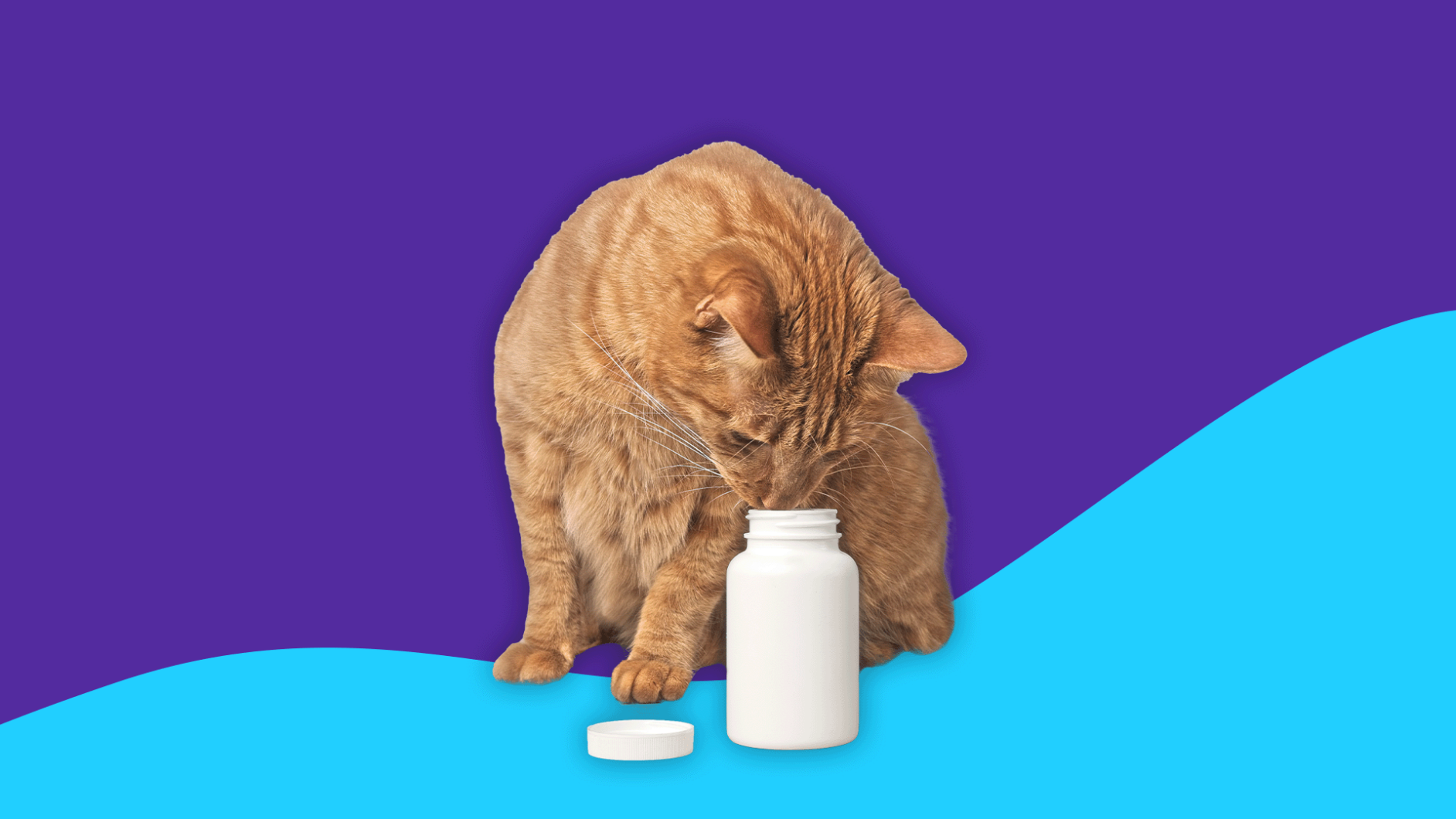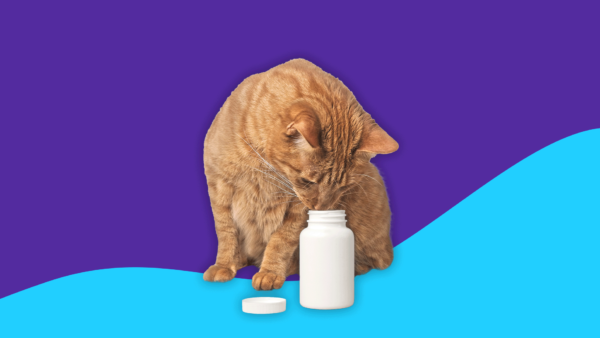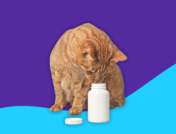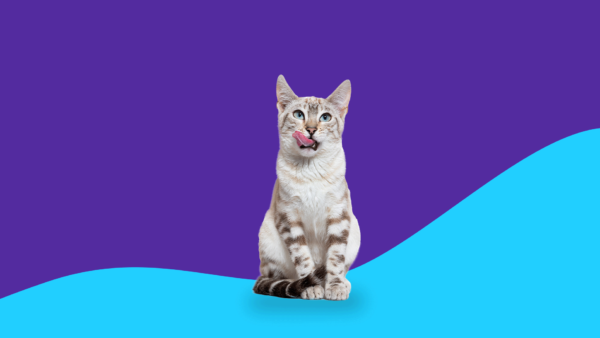Key takeaways
Amoxicillin is used to treat bacterial infections in cats.
The standard amoxicillin dosage for cats varies by the type of infection, but doses range between 10–22 mg/kg.
The most common side effects of amoxicillin in cats are digestive system issues such as vomiting, loss of appetite, and diarrhea.
Do not give amoxicillin to cats allergic to penicillin or penicillin drugs.
Amoxicillin is a bactericidal antibiotic commonly used in cats and dogs. It’s related to penicillin, but animals absorb it better, and the drug stays active longer. Amoxicillin, penicillin, and similar drugs called beta-lactams kill bacteria by blocking their ability to make cell walls. They essentially punch holes in bacteria cell walls, causing them to die. Amoxicillin has FDA approval to work against a large variety of feline bacterial infections, including urinary tract infections, upper respiratory tract infections, soft tissue infections, skin infections, and intestinal infections. However, veterinarians may use it off-label for other types of bacterial infections.
RELATED: Save up to 80% on amoxicillin
What is amoxicillin used for in cats?
Veterinarians use amoxicillin to eradicate bacterial infections in cats. The U.S. Food and Drug Administration (FDA) has approved its use in cats to treat bacterial infections of the upper respiratory tract, digestive system, skin, soft tissues, skin, and urinary tract. Amoxicillin cannot fight off every type of bacterial infection. It’s most effective against anaerobic bacteria that don’t need oxygen as long as they haven’t developed resistance to drugs that work like amoxicillin called beta-lactams.
Urinary tract infections
UTIs, particularly bladder infections, commonly involve common bacteria that can be killed by amoxicillin, such as Staphylococcus, Streptococcus, and E. coli. Amoxicillin can’t treat all possible bacterial infections. Veterinarians will make their best prediction about the infecting agent and the appropriate antibiotic based on the nature of the case.
Gastrointestinal infections
Many bacteria that cause UTIs normally live harmlessly in the intestines, but they can sometimes cause problems there, too. Amoxicillin is a first-line treatment for these infections. Additionally, some cats are infected by a type of stomach bacteria called Helicobacter. Though veterinarians are uncertain, Helicobacter stomach infections may sometimes cause stomach lining irritation. Some veterinarians will use amoxicillin or another antibiotic off-label if the cat shows signs of stomach irritation or ulceration, such as chronic vomiting or lack of appetite.
Upper respiratory tract infections
Some upper respiratory tract infections in cats, such as tonsillitis and tracheobronchitis, are caused by bacteria susceptible to amoxicillin. Again, the veterinarian will start amoxicillin or another antibiotic based on their best deduction of the bacteria involved. However, repeated infections may require tests to determine the precise bacteria involved.
Skin and soft tissue infections
Skin infections such as bacterial dermatitis and soft tissue infections such as abscesses, lacerations, and wounds are also commonly caused by amoxicillin-susceptible bacteria like Staphylococcus or Streptococcus. Again, these bacteria are so common that veterinarians usually start amoxicillin therapy based on the evidence they observe. If the prescribed antibiotic doesn’t work, they’ll take a sample and test it.
Is amoxicillin safe for cats?
Penicillins like amoxicillin are among the most commonly used antibiotics in veterinary medicine. Amoxicillin is effective, safe, well-studied, and has few side effects. Its one drawback is its potential to provoke an allergic reaction, which is true of antibiotics. Cats who have had any kind of allergic reaction to penicillin or penicillin drugs should not be given amoxicillin.
It’s also possible that cats who have had an allergic reaction to drugs that work like amoxicillin may have a reaction to amoxicillin itself. Tell the veterinarian about any allergic reaction a cat might have had to previous medications.
Cats with sepsis, shock, or severe illness should not be given oral antibiotics. They may be too sick to absorb the medicine, so injections are required.
Side effects of amoxicillin in cats
The most common side effects of amoxicillin in cats are:
- Loss of appetite
- Vomiting
- Diarrhea
The most severe adverse reactions are allergic reactions. Mild penicillin reactions might cause hives, rashes, or itching. Though not life-threatening, an allergic reaction to amoxicillin means the drug must be stopped before anything worse happens. Discontinue the drug and call the veterinarian. It may help to take pictures of the skin rash or welts.
Penicillins can also rapidly bring on an uncommon but potentially life-threatening allergic reaction called anaphylaxis, which causes blood pressure to drop as well as swelling that can tighten or close off the throat and airways. Symptoms appear shortly after a dose is given and can worsen rapidly. These include:
- Skin swelling
- Difficulty breathing (wheezing, rapid breathing)
- Weak but rapid pulse
- Acting dizzy
- Fainting
Anaphylaxis is a veterinary emergency. The cat must be immediately taken to an open veterinary clinic or hospital.
Interactions of amoxicillin with other pet meds
As with all drugs, problems may arise when amoxicillin is combined with other drugs, but the list of drug interactions isn’t lengthy. For amoxicillin veterinarians are most concerned about combining amoxicillin with:
- Antibiotics that prevent the growth of bacteria without actually killing them, like macrolide antibiotics, tetracyclines, and sulfa drugs
- The anticancer drug methotrexate
If you’re giving your cat dietary supplements, herbal remedies, or other over-the-counter medicines such as CBD to your cat, you probably don’t need to stop when the cat is on amoxicillin. However, check with the veterinarian before combining amoxicillin with these products.
Amoxicillin dosage for cats
Amoxicillin dosages will vary depending on the infection. Both doses and duration can vary, but for most susceptible bacterial infections, the recommended dosage is 50 mg per cat or 11-22 milligrams (mg) per kilogram of body weight (about 5-10 mg/lb) for five to seven days (as long as symptoms last) and for two days after symptoms have gone away.
In determining an appropriate dose of amoxicillin, veterinarians make a distinction between two types of bacteria: gram-positive bacteria and gram-negative bacteria. These two major types of bacteria have structurally different cell walls. Penicillins work on both, but dosages may need to be higher for gram-negative bacteria.
Plumb’s Veterinary Drug Manual lists the following amoxicillin dosages for cats:
- For susceptible gram-positive bacterial infections: 10 mg/kg taken by mouth two to three times per day
- For susceptible gram-negative bacterial infections: 10-22 mg/kg taken by mouth two to three times per day
- For susceptible UTIs: 11-15 mg/kg taken by mouth every 8-12 hours for 3-5 days.
- For Helicobacter eradication: 20 mg/kg taken by mouth two times per day for 14 days in combination with the antibiotics metronidazole and clarithromycin
- For sepsis: 22-30 mg/kg injections or by mouth every 8 hours for as long as necessary
Can cats overdose on amoxicillin?
Too much amoxicillin is not considered a health threat but can lead to digestive system problems like vomiting, diarrhea, or loss of appetite. Call a veterinary hospital, veterinarian, or animal poison control center for advice if a cat is given too much amoxicillin.
Can I give my cat amoxicillin every day?
Cats can be given amoxicillin every day for a few days. It’s safe if given to the cat exactly as the veterinarian prescribes.
The cat must get every dose on time for the full prescribed duration. Missing doses allow the bacteria to start growing and possibly develop resistance to the drug. Stopping the drug may result in the infection roaring back to life.
Long-term use is equally bad. Amoxicillin affects bacteria colonies throughout the body, most of which are beneficial. Overusing an antibiotic disrupts the delicate balance of organisms in the body, resulting in serious infections. It also increases the risk of bacteria mutating into drug-resistant forms.
How to give your cat amoxicillin
The veterinarian sends owners home with amoxicillin tablets or amoxicillin suspension in formulations appropriate for cats, such as brand-name Amoxi-Tabs. Cats can be given human formulations of amoxicillin only under the direction of a veterinary professional.
- Follow all the veterinarian’s instructions.
- Don’t miss doses.
- Give every dose following the dosing schedule for the full duration of treatment, even if the cat seems fully recovered.
- Amoxicillin can be given with or without food.
- If the cat vomits after a dose or shows other signs of digestive upset, try giving the tablet or solution by mouth.
- If you don’t know how to give your cat a tablet, ask a veterinary professional to demonstrate the best technique. Alternatively, ask the veterinarian for a liquid version for easier dosing.
- When dosing the cat with the liquid suspension:
- Shake the bottle before each dose to evenly mix the medicine with the water.
- Measure each dose with a calibrated oral syringe.
- The oral suspension is only good for 14 days—throw it out after 14 days, even if there’s some left.
- If a dose is skipped, give it when remembered unless it’s almost time for the next dose. In that case, skip the missed dose and give the next dose as scheduled.
- There is no need to taper the dose when this drug is discontinued.
- Store amoxicillin tablets at room temperature.
- Amoxicillin oral suspension can be stored at room temperature or in a refrigerator.
Amoxicillin alternatives for cats
While veterinarians have many antibiotics, the veterinarian’s job is to pick the most effective and safe antibiotic for the particular type of bacteria causing the infection. Amoxicillin has the benefit of being a broad-spectrum antibiotic, one that fights off a large variety of bacterial infections, so it’s often a good first choice.
In many cases, amoxicillin may not work because the infecting bacteria have an enzyme that pulls apart a section of the amoxicillin molecule. In those cases, the veterinarian will prescribe amoxicillin-clavulanate, a combination that prevents bacteria from destroying the drug.
Some cats can’t take penicillin drugs safely. In those cases, a veterinarian can use antibiotics similar to amoxicillin. These are called beta-lactams and include cephalosporin antibiotics, carbapenems, and others. Depending on the infection, other types of antibiotics might be suitable alternatives, including macrolide antibiotics, sulfa drugs, or doxycycline.
Because of the risks to the cat, veterinarians are unlikely to suggest natural remedies for bacterial infections.
RELATED: Amoxicillin (Amoxil) alternatives: what can I take instead of amoxicillin?
Summary
Amoxicillin is effective and safe for your cat, provided all the veterinarian’s instructions are followed. To work, daily doses must be given for the full duration of the prescription. Sometimes, amoxicillin may not work. Contact the veterinarian if the cat doesn’t get better after a few days.
Sources
- Amoxicillin, VCA Animal Hospitals
- Amoxi-Drop amoxicillin oral suspension prescription animal drug information, NIH National Library of Medicine
- Amoxi-Tabs amoxicillin tablet prescription animal drug information, NIH National Library of Medicine
- Antimicrobial use guidelines for treatment of respiratory tract disease in dogs and cats: Antimicrobial Guidelines Working Group of the International Society for Companion Animal Infectious Diseases, Journal of Veterinary Internal Medicine
- Helicobacter gastritis in dogs and cats, DVM 360
- Top urinary tract & prostate antibiotics, Clinician’s Brief
- Use of penicillins in animals, Merck Veterinary Manual











